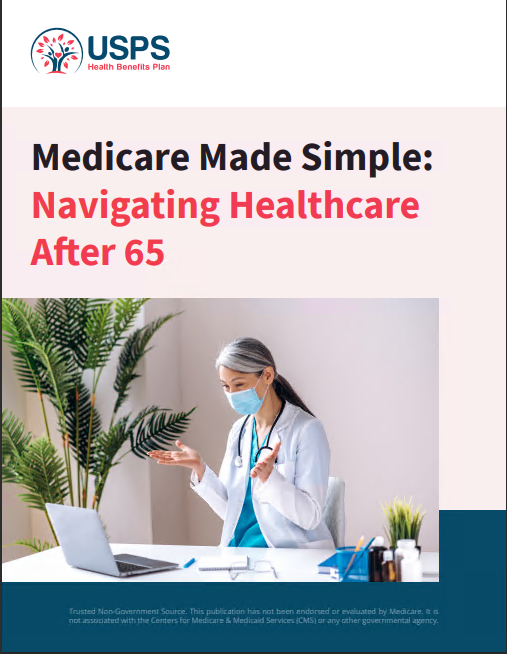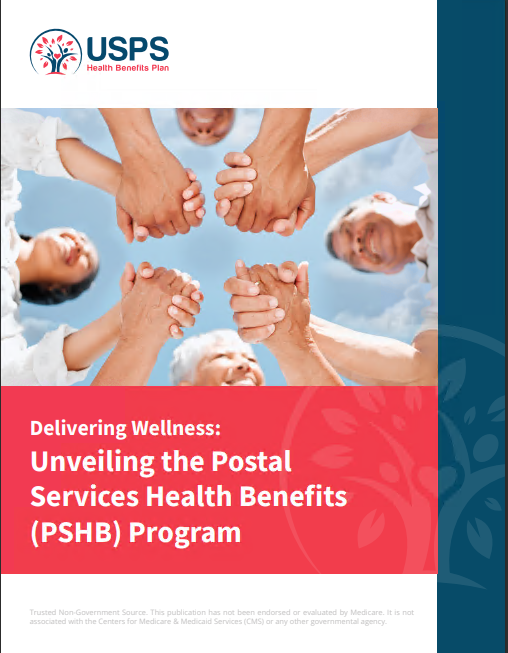Key Takeaways
-
The switch from FEHB to PSHB in 2025 changes how USPS health benefits interact with Medicare and retirement planning.
-
Understanding your options now can help you avoid gaps in coverage, unexpected costs, and future eligibility issues.
The Shift That Changes Everything
If you work for the United States Postal Service or you’re already retired, you’re probably familiar with the Federal Employees Health Benefits (FEHB) Program. But starting in 2025, a new system takes over for postal workers and retirees: the Postal Service Health Benefits (PSHB) Program. This is a big change, and if you don’t fully understand how it affects you, your retirement plan could hit a few bumps.
Let’s break it down in plain English.
Why the Transition to PSHB Happened
Congress passed a law in 2022 requiring USPS to move its workers and retirees into a separate health benefits program. The idea was to:
-
Reduce USPS’s long-term healthcare costs
-
Align USPS health plans more closely with Medicare for retirees
-
Simplify benefit management for postal employees
The result? The new PSHB Program officially takes effect on January 1, 2025. That means during the Open Season from November to December 2024, you had your first opportunity to enroll in a PSHB plan for coverage beginning in 2025.
Who Is Affected?
You are affected if you fall into any of these categories:
-
You’re a current USPS employee
-
You’re a USPS annuitant (retiree)
-
You’re a family member covered under a USPS employee or retiree plan
Everyone under the USPS umbrella must move from FEHB to PSHB starting in 2025. But there are some exceptions for family members who receive FEHB through another federal employee or for those who have certain Medicare exemptions.
What’s Different Between FEHB and PSHB?
PSHB looks a lot like FEHB in many ways. You’ll still have access to familiar plan names, similar coverage options, and nationwide availability. But there are some important differences you’ll want to keep in mind:
Medicare Enrollment Requirement
Starting in 2025, if you’re a USPS retiree and you’re eligible for Medicare Part B, you must enroll in Part B to stay enrolled in PSHB. This rule also applies to eligible family members.
If you retired before January 1, 2025, and you’re not already enrolled in Part B, you’re exempt from this rule—but only if you stay enrolled continuously in PSHB.
Coordination with Medicare
One of the biggest changes is how PSHB plans work with Medicare. Once you’re enrolled in both, you may see:
-
Lower out-of-pocket costs for doctor visits, hospital stays, and prescriptions
-
Waived deductibles and coinsurance in some plans
-
Premium reimbursements depending on your selected plan (check the plan brochure for details)
This tighter coordination is designed to help you avoid the financial burden of high medical expenses after retirement.
Prescription Drug Coverage
Retirees with Medicare Part B are automatically enrolled in a Medicare Part D Employer Group Waiver Plan (EGWP) through PSHB. This means your prescription drug coverage is handled under Medicare rules, often with better cost protection.
Premium Sharing
You’ll still pay your share of premiums, and the USPS continues to cover about 70% of the total premium cost, just like under FEHB. However, premium amounts and cost-sharing details may differ from what you’re used to.
What This Means for Retirement Planning
This transition isn’t just about switching plans. It can have ripple effects on your retirement strategy. Let’s walk through the major planning areas you’ll want to revisit.
1. Medicare Timing
If you’re approaching age 65, or already there, the Medicare enrollment piece is crucial. You’ll need to:
-
Enroll in Medicare Part A (usually premium-free if you have enough work history)
-
Enroll in Medicare Part B when first eligible (to avoid late penalties and stay in PSHB)
Missing your Medicare Part B enrollment window can result in late penalties and could put your PSHB eligibility at risk.
2. Budgeting for Healthcare
Knowing that Medicare Part B comes with a monthly premium (standard is $185 in 2025), you’ll need to account for that in your retirement budget. Add in your PSHB premium share and any out-of-pocket expenses, and it’s worth revisiting how much you plan to spend monthly in retirement.
Some PSHB plans offer reimbursements that can offset the Part B premium—but this isn’t guaranteed, and the amount can vary. Always check the fine print before choosing a plan.
3. Survivor Benefit Planning
If you plan to cover a spouse or dependent in retirement, make sure they also meet the Medicare requirement if applicable. A spouse who’s Medicare-eligible must also enroll in Part B to stay on your PSHB plan. This can impact whether a survivor benefit election makes sense for your pension or annuity.
4. Evaluating FEHB if You’re Not Postal
If you’re a USPS family member covered under someone else’s federal health plan, or you work elsewhere in the federal government, you might still be in FEHB. In that case, this switch doesn’t impact you directly—but it’s still good to understand the difference.
Likewise, if you plan to leave USPS before retirement, your benefits may revert to standard FEHB rules if you get a different federal job.
What If You Don’t Want to Enroll?
Here’s the deal: If you don’t make an election during Open Season, you’re automatically enrolled in a similar PSHB plan for 2025. That’s to help prevent any loss of coverage.
But there’s a catch: If you’re eligible for Medicare Part B and fail to enroll, you could lose eligibility for PSHB altogether. So doing nothing isn’t always the safest bet.
You still have future Open Seasons to make changes, and Qualifying Life Events (QLEs) like marriage, divorce, or retirement allow mid-year changes. But it’s much easier to stay on track if you take action early.
Your Retirement Timeline Matters
Different stages in your career or retirement will change how you approach this transition.
If You’re Still Working
-
Keep track of your Medicare eligibility age (usually 65)
-
Attend USPS briefings and read OPM materials
-
Make a plan for enrolling in Part B on time
If You’re Retiring Soon
-
Make sure your retirement paperwork includes your health benefits selection
-
Review Medicare enrollment deadlines (Initial Enrollment Period, Special Enrollment Period)
-
Double-check that your spouse or dependents are covered and compliant
If You’re Already Retired
-
Check whether you’re exempt from the Medicare Part B requirement
-
Verify your PSHB plan selection during Open Season
-
Monitor for notices about automatic enrollments or changes
Tips for Staying Ahead
Planning early can keep your healthcare coverage smooth and your retirement stress-free. Here are a few tips to help you stay organized:
-
Mark Your Calendar – Don’t miss the November-December Open Season.
-
Create a Medicare Checklist – Track when to enroll and what documents you need.
-
Compare Plan Details – Use plan brochures and comparison tools to find the best fit.
-
Review Annuitant Premiums – Make sure you’re aware of your out-of-pocket share and whether your plan offers Part B reimbursement.
-
Talk to a Pro – Health coverage can be complicated. A licensed agent can help break it down.
What to Do Next
This transition might feel like a lot to manage, but you’re not alone. USPS and OPM provide plan comparison tools, and you’ve got support to help you understand your options. The most important step? Don’t ignore it.
Your health benefits are one of the biggest assets you carry into retirement. A smart choice now sets you up for better care, fewer costs, and peace of mind down the road.
Take Charge of Your Retirement Health Strategy
Making sense of FEHB vs. PSHB isn’t just a paperwork issue—it’s a core part of how you protect yourself in retirement. Whether you’re years away from leaving USPS or already enjoying retirement, this switch affects how you prepare and what steps you take next.
If you want clarity or feel unsure about how this shift impacts your personal situation, get in touch with a licensed agent listed on this website for professional advice that’s specific to your needs.











